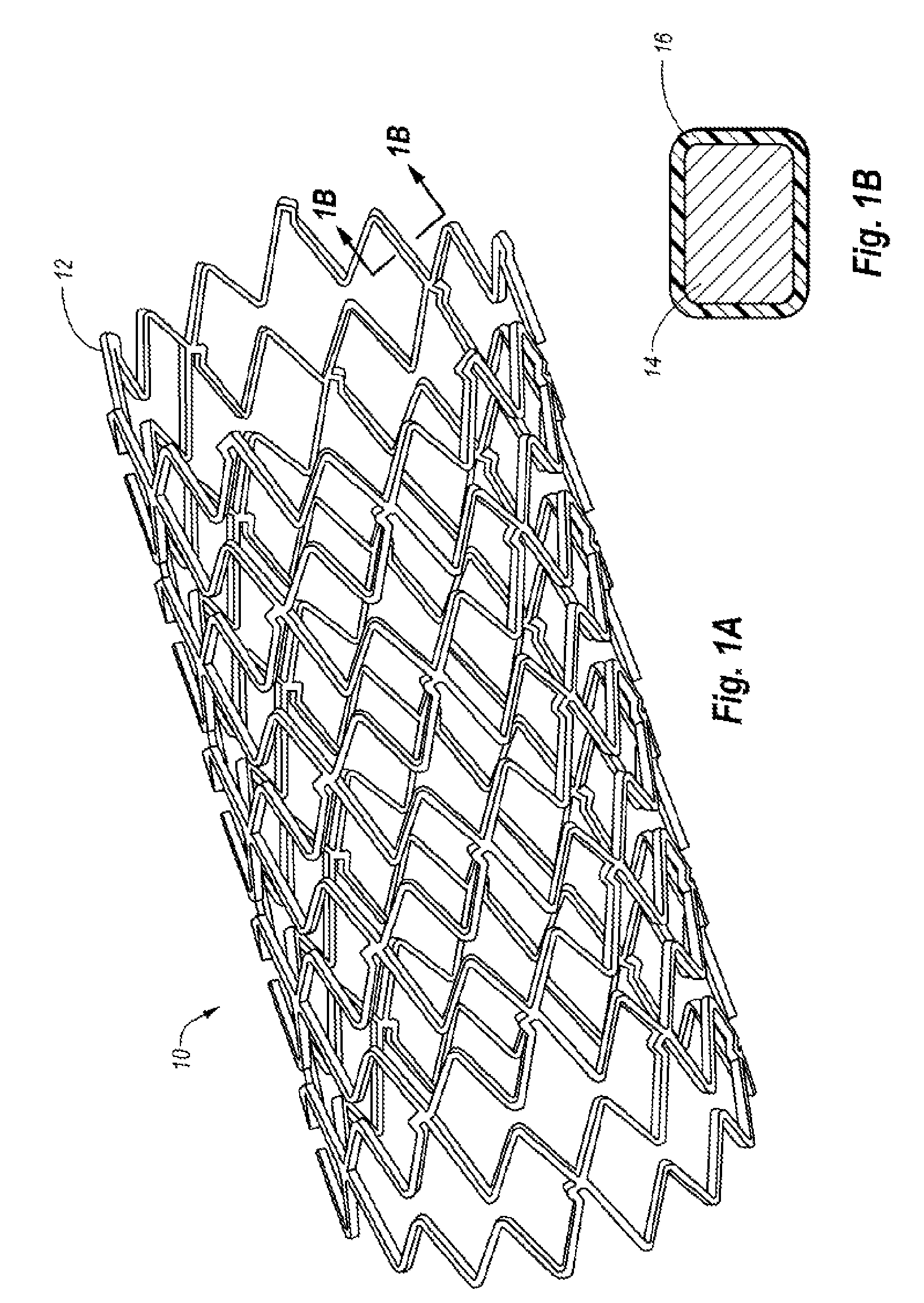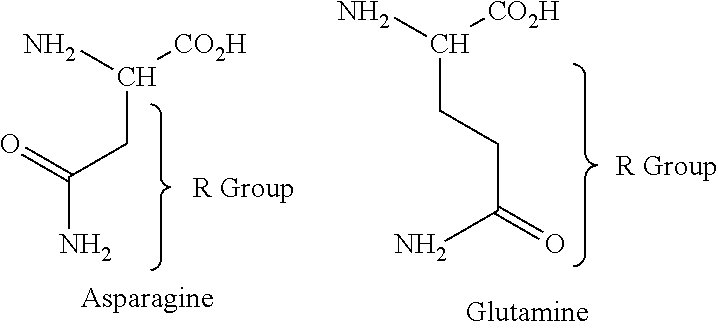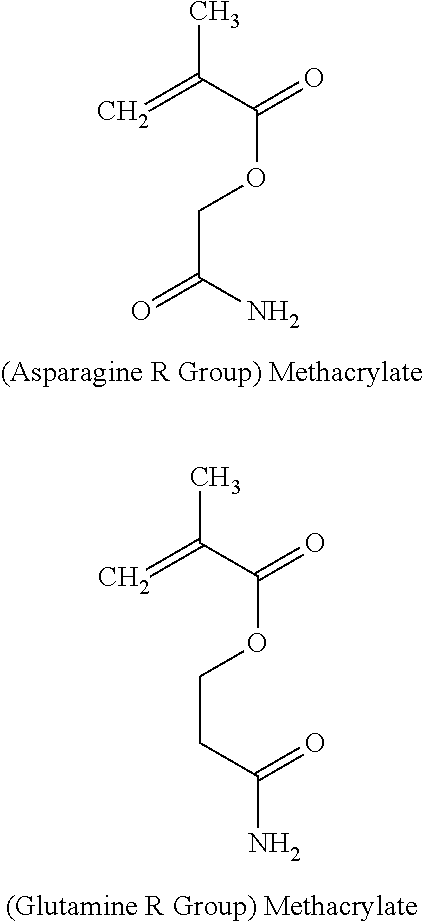Amino acid mimetic copolymers and medical devices coated with the copolymers
- Summary
- Abstract
- Description
- Claims
- Application Information
AI Technical Summary
Benefits of technology
Problems solved by technology
Method used
Image
Examples
example 1
Example 1 describes a copolymer of poly(acetamide methacrylate-co-n-butyl methacrylate). The polymer has the following formula.
In the foregoing formula, m is in a range from 0.1 to 0.99 and n is in a range from 0.01 to 0.9. The use of poly(n-butyl methacrylate) monomer is particularly advantageous since the homopolymer of PBMA is currently being used in implantable medical devices and is thus known to be biocompatible.
example 2
Example 2 describes a copolymer of poly(3-methacryloyl propionamide-co-ethyl methacrylate). The chemical formula of poly(3-methacryloyl propionamide-co-ethyl methacrylate) is shown below.
In the foregoing formula, m is in a range from about 0.1 to about 0.98 and n is in a range from about 0.02 to about 0.9. The higher Tg of the alkyl methacrylate monomer will enable a harder, stronger coating at the expense of elasticity as compared to Example 1.
example 3
Example 3 describes a copolymer of poly(alaninamide methacrylate-co-n-propyl methacrylate). The copolymer of Example 3 has the following formula.
In the foregoing formula, m is in a range from about 0.1 to about 0.995 and n is in a range from about 0.005 to about 0.9.
PUM
| Property | Measurement | Unit |
|---|---|---|
| Temperature | aaaaa | aaaaa |
| Temperature | aaaaa | aaaaa |
| Temperature | aaaaa | aaaaa |
Abstract
Description
Claims
Application Information
 Login to View More
Login to View More - R&D
- Intellectual Property
- Life Sciences
- Materials
- Tech Scout
- Unparalleled Data Quality
- Higher Quality Content
- 60% Fewer Hallucinations
Browse by: Latest US Patents, China's latest patents, Technical Efficacy Thesaurus, Application Domain, Technology Topic, Popular Technical Reports.
© 2025 PatSnap. All rights reserved.Legal|Privacy policy|Modern Slavery Act Transparency Statement|Sitemap|About US| Contact US: help@patsnap.com



